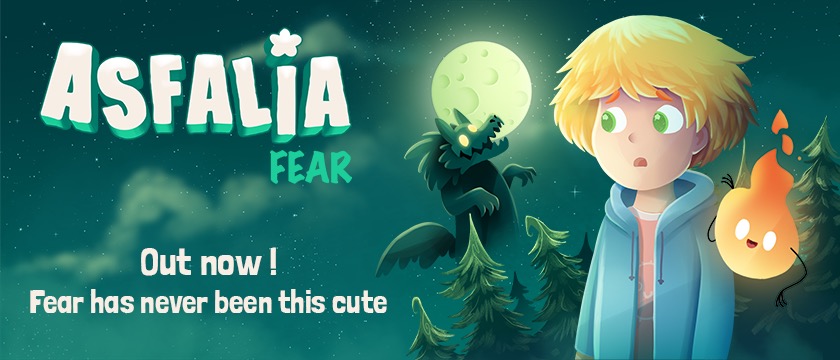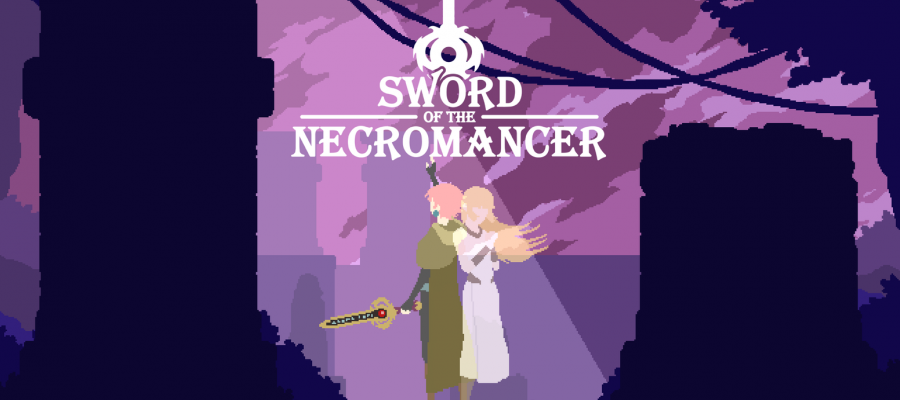Game: Sword of the Necromancer
Genre: Action, Adventure, Roguelike
System: PC (also on Nintendo Switch)
Developer|Publisher: Grimorio of Games
Age Rating: EU 16+ | US M
Price: US $14.99 | UK £13.49 | EU €14,99
Release Date: January 28th, 2021
Review code provided with many thanks to Grimorio of Games
Rise From Your Grave
Sword of the Necromancer is a top-down dungeon crawler with roguelike elements. It takes clear inspirations from games like Enter the Gungeon and the top-down Zelda games. But, how does this title stand out from the crowd you ask? Well, its unique hook is its ability to revive enemies from the dead and have them fight alongside you, as you do your best to conquer the dungeons run after run. An interesting game mechanic but is it enough to attract attention in what has become a bloated genre in recent years?

Playing as Tama, you are on a quest to save your lover Koko who has died. As you enter your first dungeon you find the sword of the necromancer, which acts as a tutorial stage to get acquainted with the controls and game mechanics. After which you soon discover the sword is not enough to revive a human, so, of course, you have to go through several dungeons, each with a boss battle to finally find the solution.
I loved the game’s opening animation and epic soundtrack when you boot up the game. It’s well made and it gets you pumped to dive into the dungeons and slay some beasts. I wasn’t as fond of the game’s story elements though. When you complete a floor the game sort of just pauses for a period to play a cutscene which gives further depth into Tama and Koko’s relationship and how Koko inevitably met her fate. It’s presented as still images with text and pretty good voice acting. The story is fine and I’m sure will interest folk. The trouble is these moments just go on a tad too long. You get pumped after defeating a difficult boss ready to jump onto a new floor but the long pause for story spoils the momentum.

Choose Carefully
The gameplay feels pretty familiar to the roguelike genre. You enter a dungeon with multiple rooms to explore and nasties to take out. There’s plenty of chests to find and a big boss to defeat at the end that will likely take you several tries until you learn the pattern.
You have 4 equipment slots one of which is always occupied by your sword. The other slots can be used to occupy other items such as weapons, spells and amulets. Alternatively, if you stand over the body of a deceased enemy you can revive it to occupy an item slot and summon it at will to fight for you later. It quickly becomes a juggling act of what to equip. You could have three monsters but then you may miss out on using items you find in chests. You also can’t store items to use later, unless you find a special purple glowing chest by chance in the dungeon or defeat a boss. So if you do swap any items out you will lose any previously equipped items in that slot.

Hack and Revive
The controls are easy to pick up. The game is basically about hacking with your sword and dashing with the shoulder buttons. You have a blue stamina bar which will deplete if you dash or use spells, it does recover over time but you can’t overly rely on it. The combat is simple but lacks satisfaction. It feels very stop-start. You can hit away at an enemy or boss which takes multiple hits then dash away to recover and repeat the process. It’s a lot of fun summoning enemies to assist you, but, it feels like they act independently. Sometimes they will go for the nearest enemy but sometimes they just sort of walk off to do their own thing. The best strategy seems to be to summon them as close to the target enemies as possible.

Familiar Dungeons
The graphics are presented in a nice pixel design with good animations. The levels, however, lack variation, you seem to just explore another stone dungeon with a different colour design each floor meaning areas lack their own personality and style. I also saw a lot of repetition of the dungeon layout, which meant the designs didn’t feel particularly random. While there are a decent variety of enemies, after a while, it felt as though only their colour changed rather than the enemy itself. Obviously, this is often used to highlight different traits of the same monster a skeleton can be ice (blue) based or fire (red) based but their patterns become familiar regardless of their trait.

Reasons to Return
Like any roguelike, you will be playing through the floors again and again. I wasn’t hooked on this game as quickly as other games in this genre. If you die you carry over some experience points to the next floor. Essentially you get a bit stronger each time, with more attack power, health and stamina the more you play. You lose any items you had equipped on death unless you managed to store them in a chest. The game does offer other difficulty and accessibility settings which are most welcome to gamers looking for a more casual experience. Once you finish the game there is a pretty cool twist at the end adding incentive to replay the game again but I won’t spoil that here.

Local Co-op is available in the game where another player can hop in at the start of the dungeon to help you on your quest. The game also has an IR card system whereby scanning codes you can unlock items to use on future runs. This leads me to believe the developers probably intend to support this game even after launch so maybe give the developers a follow to get access to these cards to use in-game.
Raise Your Sword
Overall, I enjoyed reviving the fallen enemies to aid me in battle and the score for this game is pretty good. Sword of the Necromancer has some interesting ideas but it doesn’t quite come together to stand tall against other titans in the roguelike genre. The combat lacks satisfaction and the game feels a little light on items in the build I played.
It feels like there is more to come though with potential future updates. Maybe with time, it will become more than just a good roguelike experience.
Final Verdict: I like it





